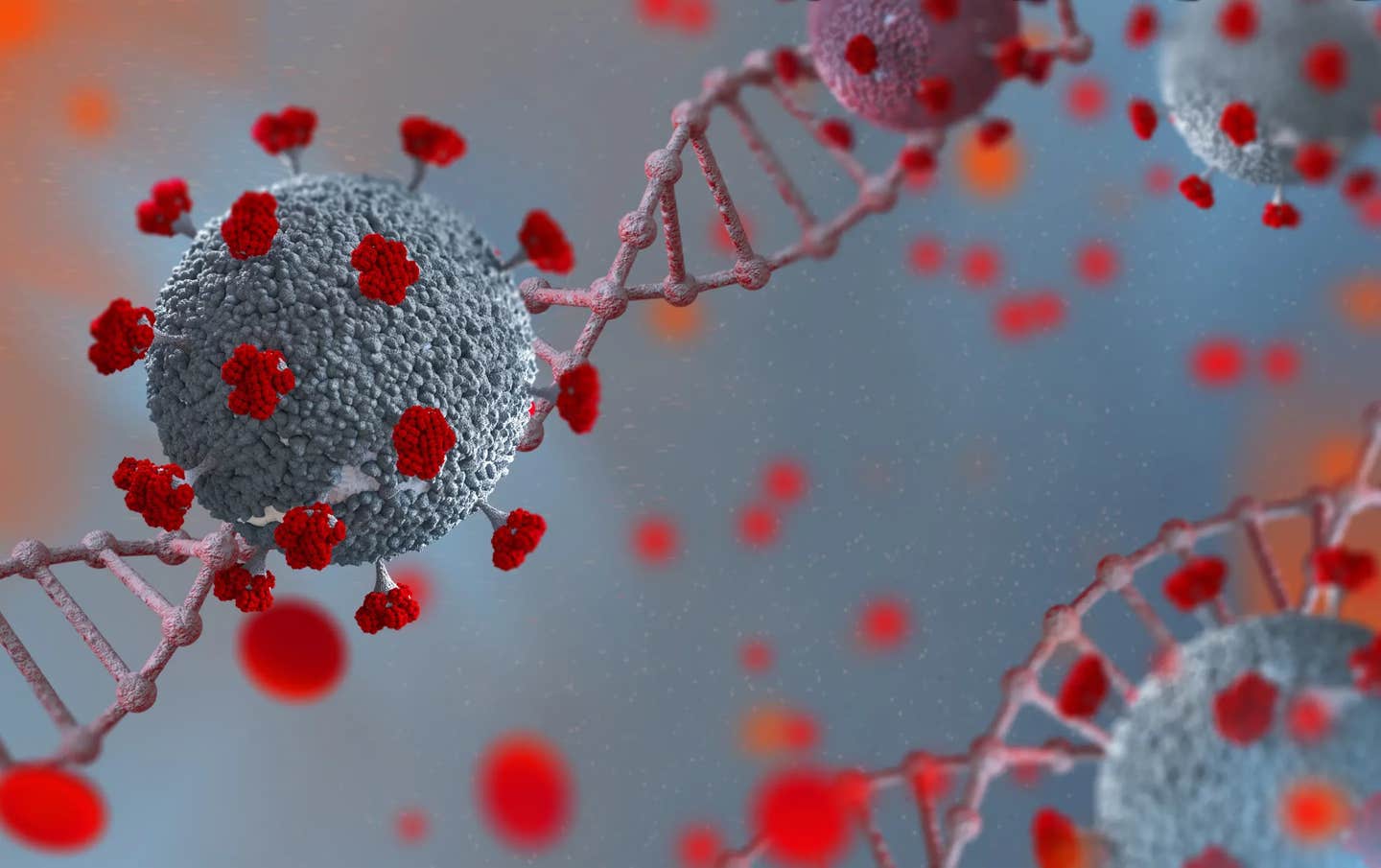Incredible “origin-of-life” molecule found to destroy cancer cells
RNA, the molecule that gave rise to life, has been shown to be essential for repairing human genetic material and preventing mutations.

[Nov. 29, 2022: María García Gordillo, University of Seville]
RNA, the molecule that gave rise to life, has been shown to be essential for repairing human genetic material. (CREDIT: Creative Commons)
RNA, the molecule that gave rise to life, has been shown to be essential for repairing human genetic material and preventing mutations that might lead to developing cancer. Recent advances in research, such as those published by the research team of Daniel Gómez Cabello at the University of Seville, propose this compound as a therapeutic target for developing tailored strategies for treating cancer.
The RNA polymerase enzyme, the RNA production machine in cells, is essential for repairing breakages in human DNA safely and reliably. RNA production is essential for healthy cells but especially for tumour cells, which require much more activity by this enzyme to grow uncontrolled.
The study revealed that RNA synthesis inhibition with the THZ1 compound and analogues after therapies that cause DNA breakages, such as radiation therapy, greatly increases tumour cells’ sensitivity to death.
“This study provides clues on how to improve conventional therapies and achieve a higher success rate with treatments. Although there is still a long way to go to be able to use these RNA polymerase inhibitors in the clinical setting, clinical trials are currently underway based on this enzyme for treating cancer”, explained the Principal Investigator, Daniel Gómez-Cabello. “Increasing the knowledge on how to use these compounds in a safer and more tailored manner allows us to address as best as possible the treatment of cancer”, added the researcher Diana Aguilar-Morante, the study’s co-author.
Related Stories
This research by the Biomedical Institute of Seville and the University of Seville, in collaboration with the Danish Cancer Society, has been published in the prestigious journal Nature Communications.
Both researchers return to Spain from Denmark and have been able to continue their research thanks to contracts funded by the Government of Andalusia and the Spanish Association against Cancer (AECC). “Thanks to the AECC, we have been able to continue with these studies and move this project forward”, explained the author.
Currently, these researchers are working on the mechanisms of how RNA, the original molecule that enables life, can serve as a tool for treating diseases.
RNA, the molecule that gave rise to life, has been shown to be essential for repairing human genetic material. (CREDIT: Creative Commons)
“Once we have observed that selectively inhibiting RNA production boosts the utility of radiation therapy in cancer cells and does not drastically affect the rest of the cells, we will start researching it in various types of cancer, such as glioblastoma and paediatric neuroblastoma”, commented Diana Aguilar-Morante.
“At this point, our challenge will be to improve the efficiency of these new RNA production inhibitors and reduce the side effects that can occur in patients with cancer”, stated Gómez-Cabello.
RNA, the molecule that gave rise to life, has been shown to be essential for repairing human genetic material and preventing mutations that might lead to developing cancer. Recent advances in research, such as those published by the research team of Daniel Gómez Cabello at the University of Seville, propose this compound as a therapeutic target for developing tailored strategies for treating cancer.
The RNA polymerase enzyme, the RNA production machine in cells, is essential for repairing breakages in human DNA safely and reliably. RNA production is essential for healthy cells but especially for tumour cells, which require much more activity by this enzyme to grow uncontrolled.
The study revealed that RNA synthesis inhibition with the THZ1 compound and analogues after therapies that cause DNA breakages, such as radiation therapy, greatly increases tumour cells’ sensitivity to death.
“This study provides clues on how to improve conventional therapies and achieve a higher success rate with treatments. Although there is still a long way to go to be able to use these RNA polymerase inhibitors in the clinical setting, clinical trials are currently underway based on this enzyme for treating cancer”, explained the Principal Investigator, Daniel Gómez-Cabello.
“Increasing the knowledge on how to use these compounds in a safer and more tailored manner allows us to address as best as possible the treatment of cancer”, added the researcher Diana Aguilar-Morante, the study’s co-author.
This research by the Biomedical Institute of Seville and the University of Seville, in collaboration with the Danish Cancer Society, has been published in the prestigious journal Nature Communications.
Both researchers return to Spain from Denmark and have been able to continue their research thanks to contracts funded by the Government of Andalusia and the Spanish Association against Cancer (AECC). “Thanks to the AECC, we have been able to continue with these studies and move this project forward”, explained the author.
Currently, these researchers are working on the mechanisms of how RNA, the original molecule that enables life, can serve as a tool for treating diseases.
DNA resection (ssDNA) correlates with nascent RNA synthesis. (CREDIT: Nature Communications)
“Once we have observed that selectively inhibiting RNA production boosts the utility of radiation therapy in cancer cells and does not drastically affect the rest of the cells, we will start researching it in various types of cancer, such as glioblastoma and paediatric neuroblastoma”, commented Diana Aguilar-Morante.
“At this point, our challenge will be to improve the efficiency of these new RNA production inhibitors and reduce the side effects that can occur in patients with cancer”, stated Gómez-Cabello.
Note: Materials provided above by University of Seville. Content may be edited for style and length.
Like these kind of feel good stories? Get the Brighter Side of News' newsletter.
Joseph Shavit
Head Science News Writer | Communicating Innovation & Discovery
Based in Los Angeles, Joseph Shavit is an accomplished science journalist, head science news writer and co-founder at The Brighter Side of News, where he translates cutting-edge discoveries into compelling stories for a broad audience. With a strong background spanning science, business, product management, media leadership, and entrepreneurship, Joseph brings a unique perspective to science communication. His expertise allows him to uncover the intersection of technological advancements and market potential, shedding light on how groundbreaking research evolves into transformative products and industries.



